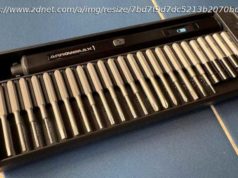Roll up for a bantamweight smartphone title decider between Apple’s two tiny siblings.
Apple may have released its largest phone ever with the iPhone 12 Pro Max, but 2020 also saw the launch of two compact crackers in the iPhone 12 mini and the iPhone SE. These two devices offer speedy components in pocket-friendly proportions, both at prices that are considerably lower than their larger siblings. However, despite these apparent similarities, the iPhone 12 mini and the iPhone SE (2020) are different in just about every way that counts. So which is the best compact smartphone for you? Apple made its second iPhone SE model available to buy on April 24, 2020, and it continues to be offered as new. Prices start from $399 / £399 / AU$679 for the 64GB model. There’s also a 128GB option for $449 / £449 / AU$759 and a 256GB option for $549 / £549 / AU$929. The iPhone 12 mini landed in shops on November 13,2020. Prices for Apple’s smallest phone for quite some time start at $699 / £699 / AU$1,199 for the 64GB model, moving up to $749 / £749 / AU$1,279 for 128GB and $849 / £849 / AU$1,449 for 256GB. Considering both devices are available in the exact same storage options, it’s simple to make a direct price comparison. Across the options, the iPhone 12 mini comes in at $300 / £300 more expensive than the iPhone SE (2020). Hold the two phones, one in each hand, and it’s really quite remarkable to consider that they hit the market in the same calendar year, let alone six months apart. To understand the enormity of this design gap, you have to examine Apple’s distinct approach for both phones. The iPhone SE was a result of the company deliberately setting out to create an affordable phone for only the third time in its history. That explains the decision to recycle the design of the iPhone 8 from 2017. Now consider that the iPhone 8 itself launched at the end of one of Apple’s three-year design cycles, with its basic shape traceable to the iPhone 6 in 2014. The result is a deeply familiar, compact yet rounded phone, with a flabby 65.4% screen-to-body ratio. The SE sports a sizable forehead and chin, the latter of which houses Apple’s classic Touch ID home button. There’s no Face ID notch here. As small as the iPhone SE is (138.4 x 67.3 x 7.3mm and 148g), it’s actually a little larger than the iPhone 12 mini. They’re about the same thickness, but the mini is 7mm shorter,3mm narrower, and 13g lighter. Despite this, the iPhone 12 mini display is actually larger, owing to the fact that it stretches out much closer to the edges of the phone for an 85.1% screen-to-body ratio. Talking of edges, the iPhone 12 mini’s flat rim and sharp 90-degree angles are what really sets it apart from the iPhone SE. In a sense, the iPhone 12 mini’s angular aesthetic harks back to the original iPhone SE, and the iPhone 4 before that. But Apple has greatly refined its classic industrial design language for the 2020s. This includes implementing a toughened nano-crystalline Ceramic Shield screen technology that lays on four times the drop protection of previous generations. It also involves an improved IP68 rating that enables immersion in six metres of water for up to 30 minutes. The iPhone SE comes with only an IP67 rating, which enables a dunk in one metre of water for 30 minutes. We’ve already touched upon the differences in display size between these two phones, but let’s spell things out. While the iPhone SE (2020) has a tiddly 4.7-inch display, the iPhone 12 mini has a 5.4-inch screen – which is still considered small by modern standards.






